Dramatic Decline in Forest Fires Saves Madagascar’s Oldest National Park, Among Other Conservation Victories in 2024
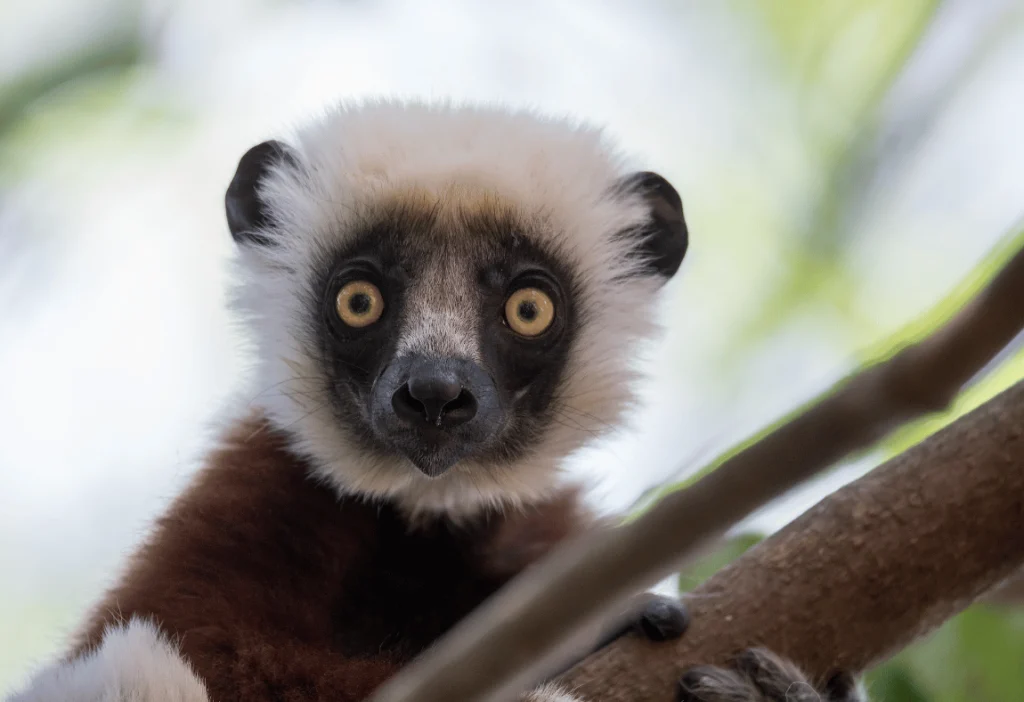
A major conservation breakthrough has been achieved in Madagascar’s oldest national park, where forest fires have decreased an astounding 35-fold in just one year. Ankarafantsika National Park, established 97 years ago, is the last stronghold of the Critically Endangered Coquerel’s Sifaka and serves as a crucial water tower feeding rivers into Madagascar’s second most important rice-producing region. For the past decade, the park’s tropical forests have faced severe threats from cattle-rustling gangs who set fires to create pastures and hide their tracks. With deforestation accelerating to 3.8% per year and just under 50% of forests remaining, the 337,000-acre park was on track to be destroyed within the next decade and was declared Critically Endangered by the Madagascar Protected Area Outlook. In February 2024, Conservation Allies partnered with Hempel Foundation, FAPBM, KfW, and others to explore urgent solutions to save the 337,000 acre park (the same size as Grand Bahama Island). The major outcome of the two-day meeting was a collective commitment to zero deforestation, significantly stepping up funding for mixed brigade park protection and law enforcement patrols to stop illegal activities by the 100th anniversary of the park in 2027. The impact has been dramatic—forest fires decreased from 1,284 in 2023 to just 36 fires during the same period in 2024. Acting on this commitment, Conservation Allies tripled support to our Partners (Fosa Association and Madagascar National Parks) specifically to increase Ranger patrols during the peak dry season. We also supported a new “Control Center” for the park to track and coordinate patrols responding to daily satellite reports on fires and forest losses. Furthermore, we offered compensation in the form of essential food supplies to communities around the park if they lit no fires. This remarkable success in Madagascar headlines a year of significant conservation achievements worldwide. In Colombia, two major new protected areas were established: the Loros Andinos Regional Natural Park, which protects the recovering Yellow-eared Parrot population, and Las Tangaras Regional Natural Park, safeguarding over 5,700 acres of pristine subtropical rainforest. In Ecuador, the Cambugán Protected Forest expanded by 445 acres, securing vital habitat for endangered species like the Andean bear. With such positive results and dedicated partnership efforts, there is renewed hope that Ankarafantsika National Park can not only survive but thrive, serving as an inspiring example of successful conservation through collaborative, community-driven environmental protection.
Conservation Allies Hosts Latin American Partners to Advance Biodiversity Protection
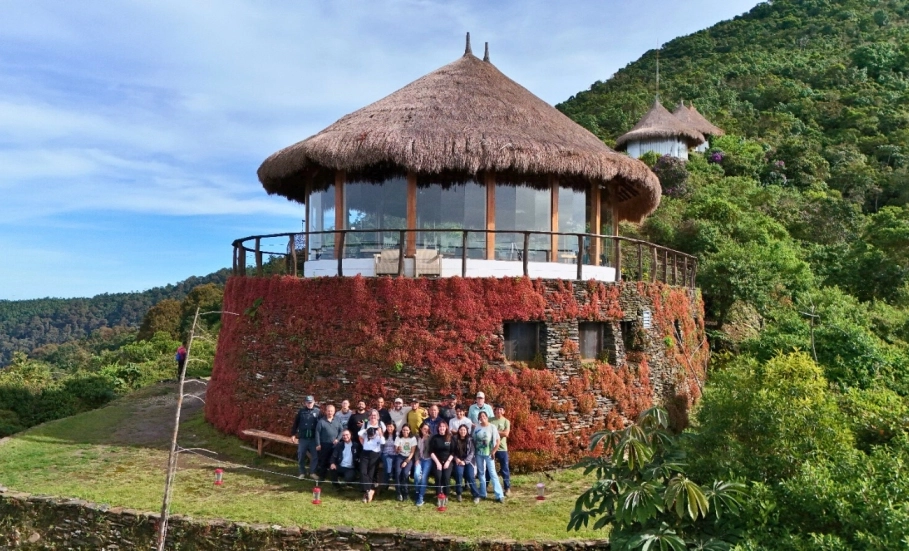
In October, Conservation Allies hosted a 5-day workshop at the El Dorado ProAves Reserve in Colombia’s Sierra Nevada de Santa Marta, bringing together nine partner organizations from across Latin America. Participants from Panama, Ecuador, Guatemala, Peru, and Colombia collaborated to exchange knowledge, share innovative solutions, and strengthen regional conservation efforts. The workshop delved into the recent and ongoing work led by our Latin American partners, highlighting innovative projects, challenges, and solutions. Notable initiatives included training rural and Indigenous community members as parabiólogos—research assistants contributing to scientific research—and exploring sustainable alternatives to reduce the impacts of cattle grazing. These discussions promoted collaboration and enhanced the shared understanding of strategies to protect the region’s unique species and habitats, advancing conservation efforts by fostering stronger partnerships and laying the groundwork for more coordinated approaches to safeguarding biodiversity. By uniting these passionate conservation leaders, the event underscored the collective commitment to safeguarding Latin America’s extraordinary wildlife and natural areas. Participating Organizations: Defensores de la Naturaleza (Guatemala), Adopta (Panama), Fundación ProAves, Sociedad Ornitológica de Córdova (Colombia), Corporación SalvaMontes (Colombia), Fundación Cambugán (Ecuador), Tesoro Escondido (Ecuador), Kawysay Biological Station (Peru), and Neotropical Primate Conservation (Peru).
Official Visit Highlights Efforts to Preserve Ankarafantsika National Park
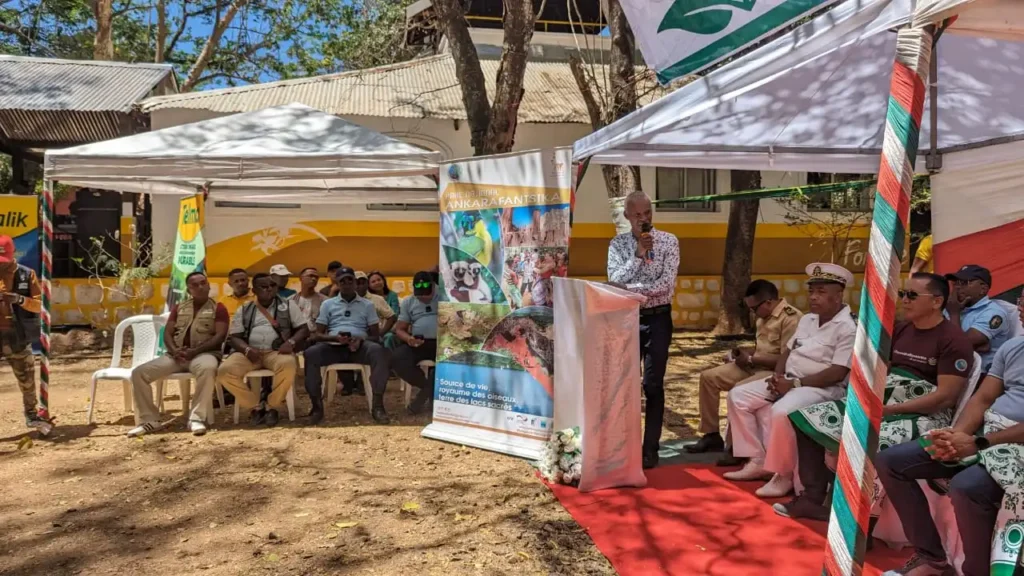
During his visit, the Minister highlighted the significant threat posed by fires in the park and emphasized the importance of protecting the remaining forests. These efforts are crucial not only for the park’s rich biodiversity but also for the surrounding districts and rural communities. As part of his plan, the Minister announced an intensive reforestation initiative set to begin during the upcoming rainy season. A key moment of the visit was the presentation of the new command center, a donation from Conservation Allies to MNP Ankarafantsika. Mr. Charles, Director of Ankarafantsika Park, introduced the command center’s advanced fire and deforestation detection tools, designed to improve response times and reduce environmental pressures. Accompanied by Mr. Solo, President of the Fosa Association, Mr. Charles demonstrated how these new tools will enhance conservation efforts in the region. Conservation Allies remains committed to supporting Ankarafantsika National Park and its partners, ensuring that efforts to combat deforestation, fires, and other environmental threats continue to protect Madagascar’s vital ecosystems.
Uniting for Madagascar: Conservation Allies Hosts Pivotal Protected Areas in Peril Forum to accelerate conservation
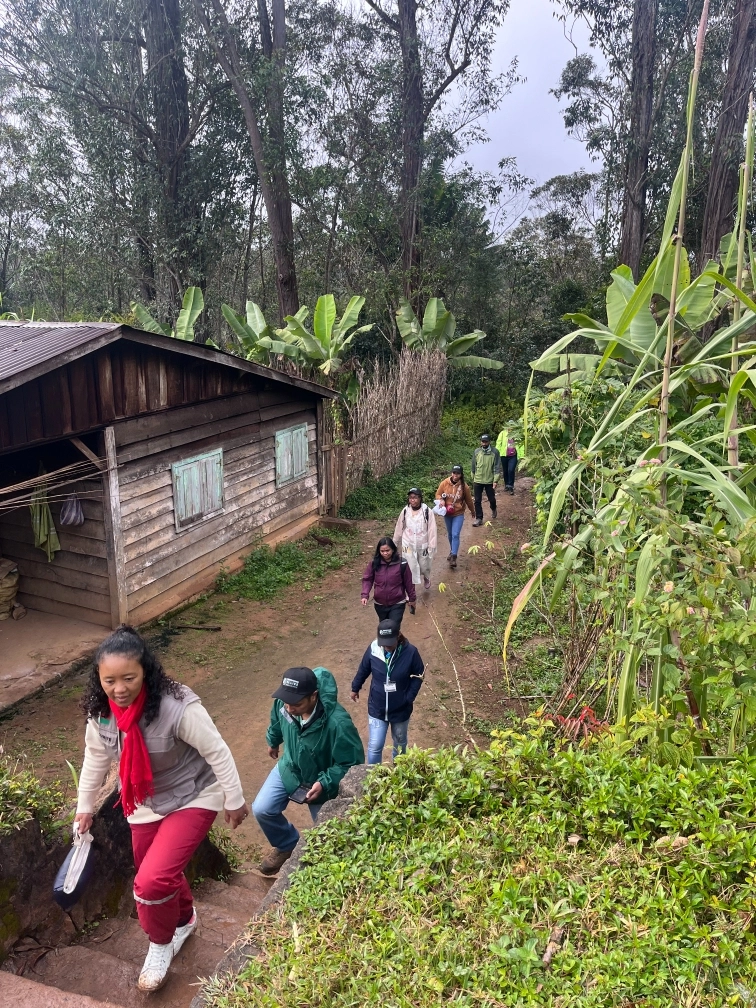
The forum was not only a platform for strategic planning but also a rare and invaluable opportunity for many of our partners to meet face-to-face for the first time. In the spirit of collaboration and camaraderie, participants shared expertise, learned about conservation challenges faced in different regions of Madagascar, and forged new strategic partnerships. Despite the serious subject matter, the forum was filled with a sense of hope and renewed energy, as we all worked together toward our shared goal of safeguarding Madagascar’s unique wildlife. During the event, we conducted SMART (Spatial Monitoring and Reporting Tool) and drone training sessions to enhance Madagascar’s conservation technology capabilities. Conservation networking and communications workshops were also held, strengthening collaborative efforts and outreach capabilities. Additionally, we took a day trip to Mitsinjo’s Protected Area, where we were lucky enough to see and hear the Indri, Madagascar’s largest lemur, in its natural habitat—a reminder of what we are fighting to protect. A significant outcome of the forum was the unanimous decision to increase mixed brigade patrols, which integrate law enforcement with conservation efforts to stop the illegal activities contributing to Madagascar’s rapid deforestation. This approach has been shown to be highly effective and is crucial for protecting Madagascar’s unique species and ecosystems from further threat. By strongly prioritizing these joint patrols, we can increase the protection of Madagascar’s endangered wildlife and ensure the preservation of its rich biodiversity. This forum represents a crucial advancement in our mission to safeguard Madagascar’s endangered wildlife. Through collaborative efforts and shared expertise, we are working towards realizing our collective vision of a sustainable future for the beautiful, one-of-a-kind island of Madagascar Over 40 people attended the 5-day workshop in Adasibe. Organizations in attendance included: Alliance Voahary Gasy (legal organization), Antrema Miray, ASITY Madagascar, Association Analasoa, Association Fosa, Association Fanamby, Association TAMIA, Association Mitsinjo, CURSA, Direction de l’Environnment ed du Developpement Durable (DREDD) Toliara, Durrell, Fondation pour les Aires Protegees et de la Biodiversite de Madagascar (FAPBM), Fikambanana Bongolava Maitso (FBM), GERP, IMPACT Madagascar, Lemur Conservation Foundation, Madagascar Biodiversity Project, Madagascar Wildlife Conservation, Madagasikara Voakajy, Ministere de l’Environnement ed du Developpement Durable (MEDD), Missouri Botanical Garden, Madagascar National Parks, Ny Tanintsika, Planet Madagascar, Razan’ny Vohibola, SADABE, and VOI Tahindraha.
New Hope for Madagascar’s Imperiled Forests with First-Ever Conservation Command Center Launch
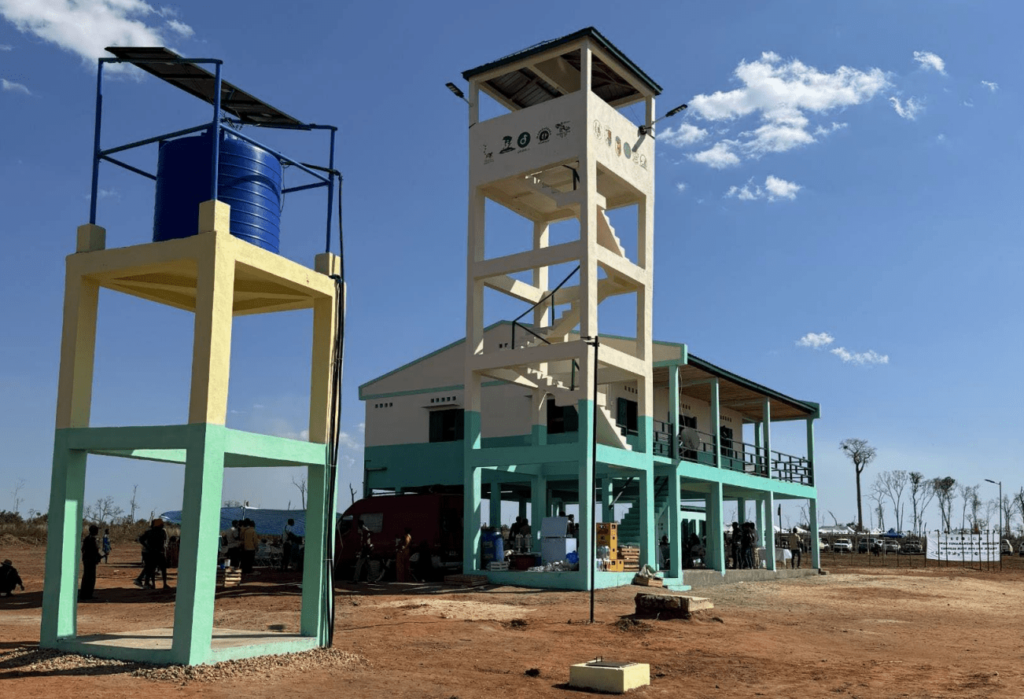
The first-of-its-kind, the Command Center is strategically located to repel a wave of illegal colonists clearing the forest of the Protected Area to grow corn and peanuts for export. Based in the zone of greatest challenges, the Command Center significantly improves the efficiency and success of patrolling operations. Named for a local warrior hero Andradrangy, the Command Center was inaugurated on 15th July and immediately became the central hub for our Protected Area enforcement teams called Mixed Brigades, composed of rangers, law enforcement officers, and local people. Previously, patrols were exceedingly challenging due to the lack of infrastructural support to access areas confronting deforestation. Now, with the amenities of this new facility—including a watchtower, clean water from a deep well, a kitchen and cook, Starlink WiFi, and comfortable beds—rangers have the resources they need to conduct their crucial work and respond rapidly to threats, maintaining a stronger presence in critical areas. Importantly, this first-of-a-kind Command Center for Madagascar represents a monumental advancement for national efforts to thwart the growing pressures on the country’s precious Protected Areas. The inauguration made national headlines and established an example that other Protected Areas facing crises are eager to replicate. Your generous support has made this achievement possible. By providing an equipped home base for Malagasy rangers, you are directly contributing to the conservation of Madagascar’s biodiversity. Your support is not just building facilities—it’s building the foundations for a future where nature can thrive. We thank Fanamby for constructing the Command Center and many partners involved in Menabe Antimena: Madagascar National Parks, USAID, US Embassy, Madagascar Protected Areas and Biodiversity Fund (FAPBM), Hempel Foundation, CNFEREF, UK Embassy, Alliance Voahary Gasy, Madagasikara Voakajy, IUCN, Durrell Conservation Trust, Ministry of the Environment and Sustainable Development (MEDD), Commandant de Groupement (Gendarme), Commissaire Principal de Police, and Commandant des zones de défense et de sécurité de Tsiribihana (Military) and many others.
New funding to save Protected Areas in Peril in Madagascar
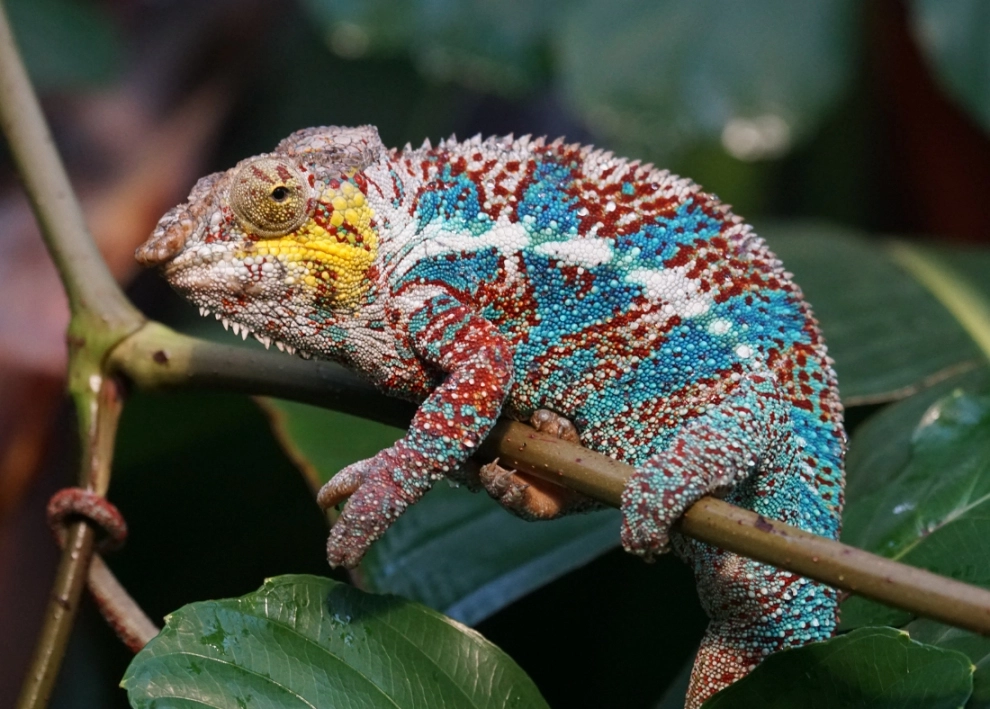
As one of the top ten poorest countries in the world (Global Finance 2024), Madagascar has the greatest concentration of biologically unique wildlife on earth. Much like Hawaii and New Zealand islands, human colonization of Madagascar only occurred in the last two millennia. Since then, its spectacular wildlife and the majority of its forests have steadily disappeared. Today, the 111 terrestrial Protected Areas in Madagascar cover 14.1% (20.5 million acres) of the country but, due to illegal activities, they have already lost more than half of their original forest cover as of 31 December 2023. The surviving 9.6 million acres of primary forest inside Protected Areas represent just 6.6% of the country – an area equivalent to the size of Puerto Rico. It is imperative to save these forests! They not only represent the last refuge for tens of thousands of endemic and at-risk species, but these forests are the best hope to ensure water resources for the country’s most important rice-growing regions (Madagascar eats more rice per person per day than nearly any other country). …The stakes for threatened wildlife and impoverished human populations could not be higher! As a small NGO working worldwide, Conservation Allies recognizes the priority and urgency in Madagascar. Over the last decade, we have grown our support and partnership here and focused our limited funding towards the Protected Areas with the highest deforestation rates. Over the past 20 years, almost half (49) of the 111 PAs have experienced continuous deforestation that will likely result in total forest loss within 50 years if no additional interventions are taken to save these forests Unlike some organizations with prescribed actions to fund, we listen to our local Malagasy partners and experts in what support is most needed to avoid deforestation and save the Protected Areas. Local conservation organizations seek the most support for their on-the-ground patrollers and law enforcement to provide safety for all. In early April 2024, Conservation Allies requested proposals from 29 partners, mainly local Malagasy NGOs. These proposals were received and reviewed by mid-May. By late May, thanks to our supporters, we were able to wire grants totaling $745,376 directly to our partners in Madagascar to protect 39 reserves and parks encompassing 7.1 million acres of forest (over ⅓ of all Protected Area forests). This represents a further increase over 2023 funding thanks to our wonderful donors, whose generous support continues to rise every year since 2019. We congratulate our partners for the magnificent work they do – we’re proud to support them as they continue their tremendous efforts toward saving Madagascar’s wonderful wildlife and people.
Avisoa’s Journey: From Deforestation to Dignity in Madagascar
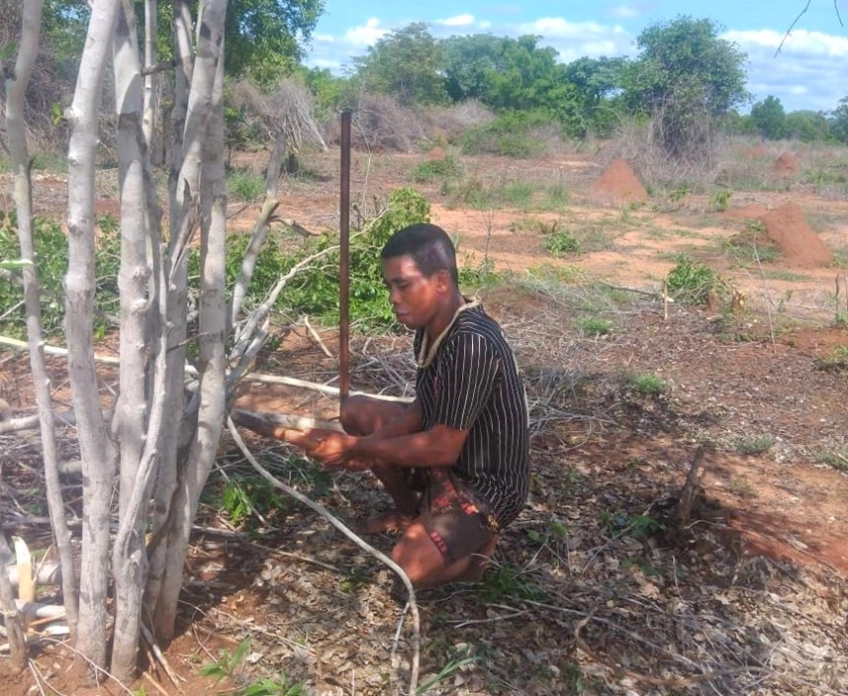
Tropical forests in protected areas are often illegally invaded by people because of their seemingly “free” land and natural resources. As a result, they are prone to deforestation due to the increased demand for timber and land to grow and sell crops, together with rapid population growth that puts immense pressure on natural resources. There is no better example than the Menabe Antimena Protected Area in West Madagascar where large numbers of migrants have been illegally entering the reserve, clearing its forests to plant corn and peanuts. Menabe Antimena is one of the most biodiverse areas on the planet, with three species being found nowhere else on Earth (including the smallest primate in the world, Madame Berthe’s mouse lemur). Despite this, over 50% of Menabe Antimena forests have been lost in just 15 years. Mikajy is an initiative funded by USAID, where they are partnering with local authorities and communities to tackle this crisis in Menabe Antimena Protected Area. USAID has helped designate 15,170 acres of unused, non-forest state lands, known locally as Bezeky and situated 20 miles south of the reserve, for green titling, offering migrants who choose to relocate to Bezeky farmable land and other benefits. Each migrant family relocating to Bezeky will receive five acres after four years of farming the land. USAID supports a generous livelihood package, including agriculture and alternative revenue-generating activities. In addition to receiving farmable land, these families are given access to, sustainable agriculture training, water from boreholes, social services, technical support, and support in selling their produce. With such supports in place, the migrants will be able to invest in their land and enhance its productivity, rather than resorting to degrading the Protected Area. Unfortunately, the Bezeky area was often frequented by bandits who stole from local communities. Therefore, an armed military/police presence is essential to protect the migrants and encourage them to relocate to Bezeky. Conservation Allies provided emergency support for Project Mikajy through our partner Madagasikara Voakajy to mobilize military protection at Bezeky and ensure safety for the first 200 migrant families who voluntarily relocated here. Among them, 25-year-old Mr. Avisoa Fidèle Randriamanana, originally from southern Madagascar, traveled with his wife and two small children to Bezeky. Before relocating, Avisoa lived inside Menabe Antimena Protected Area, where he made a living from illegal slash-and-burn cultivation in the forest. This family was determined to make a change for the better. He is hopeful that his new property will allow him and his family to live with dignity and security on their own land, not continually hiding and dodging protected area patrols. Demonstrating his conviction, he and his family walked on foot from Menabe to Bezeky. With the support of USAID, he has already built his new home and started to develop his farm. Avisoa explained, “We had witnessed the degradation of the Menabe Antimena forest. Certainly, we did not own any land and I admit that we cultivated in the protected zone. We heard that there would be support and cultivation plots to distribute in Bezeky, so I decided to go there, even without transport. I wanted a chance to get my own land and start a new life.” Like all the other 199 family beneficiaries, Avisoa received 5 acres of ”Green Title” agricultural land which he will own outright after four years of caring for it. The goal of Mikajy is to relocate thousands of migrants to Bezeky, protecting the beautiful forests and wildlife of Menabe Antimena.
From logger to conservationist: Ronaldo’s story
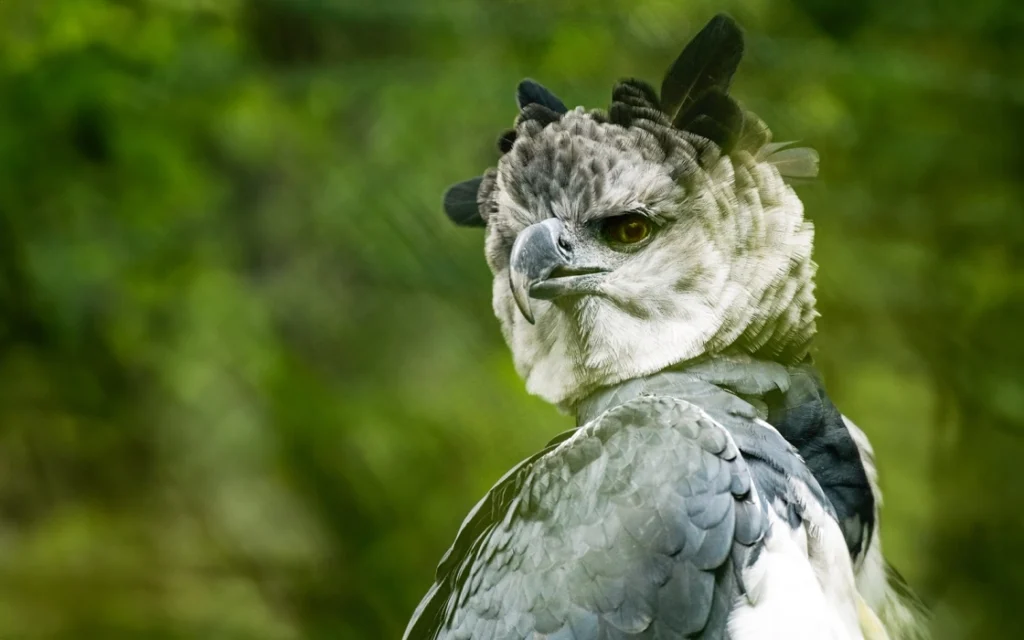
Ronaldo grew up surrounded by the rainforests of northern Ecuador, where he worked alongside his brothers transporting felled trees out of the forests to be milled into lumber. As this was the line of work of his parents before him, it seemed the natural way of life to Ronaldo— that is, until a special encounter he had that changed the direction of his life. In 2018, Ronaldo’s girlfriend introduced him to our partner organization, Reserva Tesoro Escondido, the primary force protecting this region of rainforest, known as the Chocó Lowland Forest. Tesoro uses many modalities to protect the forest, including habitat restoration, boosting local scientific research, environmental education for community members, sustainable development and women empowerment projects, and peaceful human-wildlife conflict solutions. After his initial visit to the reserve, Ronaldo was inspired by what he had seen and wanted to get more involved with the project. He began attending Tesoro’s parabiologist workshops, training to become a research assistant. To encourage participation from the local community, stewarding a future where the environment is protected by its residents, Tesoro offers this training for free. One summer day, while Ronaldo was completing a survey on the monkey populations in the area, he was stunned by the spotting of an impressive, unusual creature in the trees— a Harpy eagle. Harpy eagles are globally considered to be Vulnerable, and in much of their range, including the Chocó Lowland Forest, they are becoming increasingly rare. Harpy eagles, and many other raptors of Latin America, are threatened by two dominant forces: deforestation, mainly driven by expanding cattle-ranching, and hunting. People living in the forest and its surroundings often shoot birds-of-prey, for fear that their livestock will be preyed upon. Through their numerous conservation projects, Reserva Tesoro Escondido is working to end the destruction of northern Ecuador’s rainforests, with a particular emphasis on preserving and restoring bird biodiversity. Since his encounter with the Harpy eagle, Ronaldo, like many others who have been influenced by Tesoro, transitioned from a life of working against the environment to one where he actively endeavors to protect it. By involving the community in important conservation work, Tesoro is creating ripple effects of change across Ecuador, leading us closer and closer to a sustainable, green planet where all beings can thrive. Reserva Tesoro Escondida relies on international support to continue their conservation programs, including free environmental education and conservation training to locals who wouldn’t be able to afford the cost of tuition. If you would like to support Tesoro, please donate here.
Endangered Species are Returning to this Community Managed Lake in Madagascar

Through initiatives such as wildlife patrols, sustainable management practices, and community engagement, Impact Madagascar has successfully reduced human-induced disturbances and restored much of Lake Anjikely’s natural equilibrium. Their comprehensive approach and ongoing management of the area have contributed to the resurgence of biodiversity in the lake, making for a more balanced and resilient ecosystem. The presence of Malagasy pond herons and Madagascar big-headed turtles not only demonstrates the resilience of these species, but also emphasizes the importance of collaborative, locally-led conservation work. Continued partnerships with organizations like Impact Madagascar offer hope for the continual preservation and restoration of Madagascar’s unique biodiversity. Impact Madagascar needs your help! They are in the last push to raise funds for their ongoing community project. By donating, you will play a key role in helping provide local communities with the tools and resources they need to live sustainably alongside their natural surroundings, leading to a better world for both humans and wildlife.
Conservation Action Award Fights Environmental Crimes and Corruption in Madagascar’s Vohibola Forest
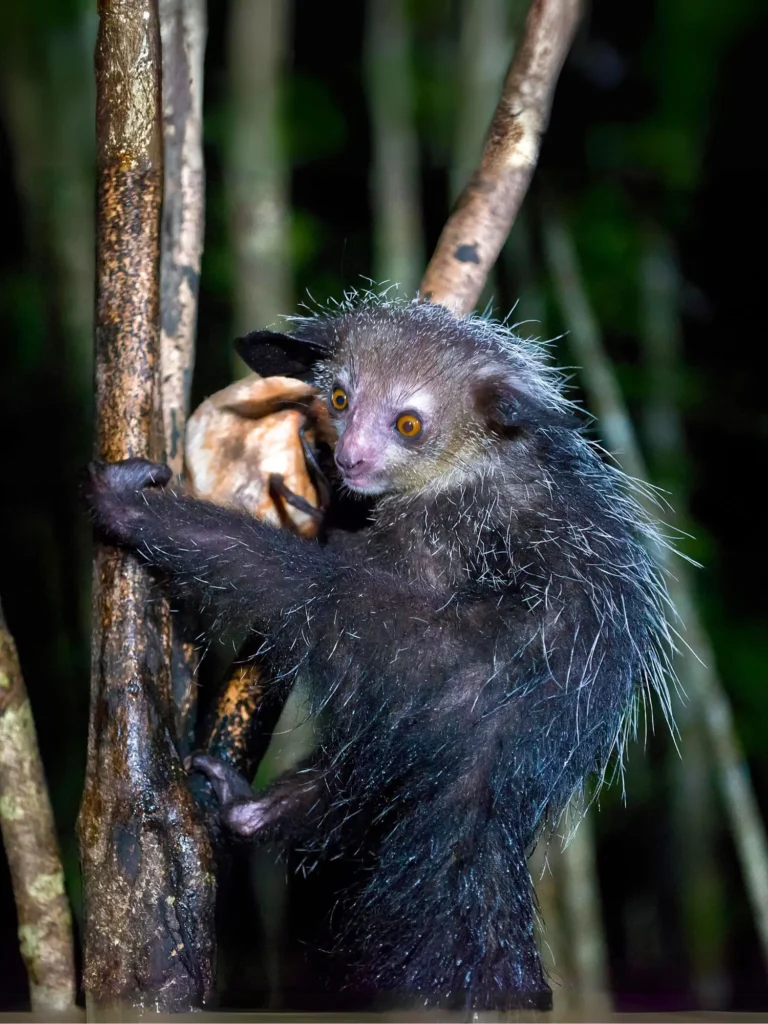
Responding to the urgent call for conservation, the Razan’ny Vohibola Association was established in 2016 by local communities and village leaders. With over 3,000 members from four surrounding villages, the association is dedicated to safeguarding Vohibola while enhancing livelihoods through education and alternative projects. However, limited funding has hampered their efforts, especially in sustaining patrol activities crucial for forest protection. Without ongoing, intensive protection measures, the Vohibola forest faces a dire future. Recognizing the critical need for support, Conservation Allies awarded a Conservation Action Award grant to Razan’ny Vohibola in 2023. We are thrilled to report that this injection of funds enabled increased intensive patrols within the forest, which was crucial for preventing hundreds of crimes against nature. With ongoing financial assistance pledged through 2024, Conservation Allies stands committed to bolstering Razan’ny Vohibola’s conservation endeavors.


